After a few slow days in Tbilisi, the capital of the Caucasus country of Georgia, and a visit to the mountains of Kazbegi, it was finally time to head west towards the Svan Mountains, my ultimate dream destination in Georgia. I’d convinced my travel buddy who I’d met at the hostel, to join me to the mountains, but when we learned that our mutual friend was heading to Kutaisi for his last few days in Georgia, we decided to follow him. We didn’t know anything about Kutaisi, I’d only included it on my list of possible destinations for one reason – to visit Gelati Monastery, a UNESCO World Heritage site. But Kutaisi turned out to be so much more than just the monastery. It was a time of joy, friendship and unexpected beauty and historical and natural sights. Going there turned out to be a great decision, not least because we randomly ran into our other two Kazbegi travel buddies at the hostel. The gang was (very unexpectedly) reunited!
Kutaisi is the third-largest city in Georgia, and it’s located on the Rioni River in the mid-western part of the country in the mountainous Imereti region. It’s one of the oldest continuously inhabited cities in the world, having been founded sometime in the 6th century BC. Kutaisi served as the capital of several kingdoms within Georgia throughout history, and keeps its status as the second-most important city in the country after Tbilisi.
Kutaisi isn’t the prettiest of cities, in fact most might say it’s a bit of an eyesore, especially if compared to Tbilisi, but while the latter is polished and very tourist friendly (at least in the city centre), Kutaisi offers a more real insight into life in a Georgian city. Home to around 150,000 people, Kutaisi is a small city which is easy to get around on foot. There are no must-see sights in the city (well, except for Bagrati Cathedral, which we somehow missed…), but I found that just aimlessly wandering around was interesting and the best way to get a feel of the city.
As we found out upon arrival, there’s quite a lot to see and do in the surrounding region of Kutaisi, so we decided to spend two days there to take it all in. We stayed at Dingo Backpackers Hostel, which is easily one of my favourite hostels in the world, and also one of the reasons we decided to spend extra time in Kutaisi. I loved the atmosphere, and the two little kitties that live there were the icing on the cake!
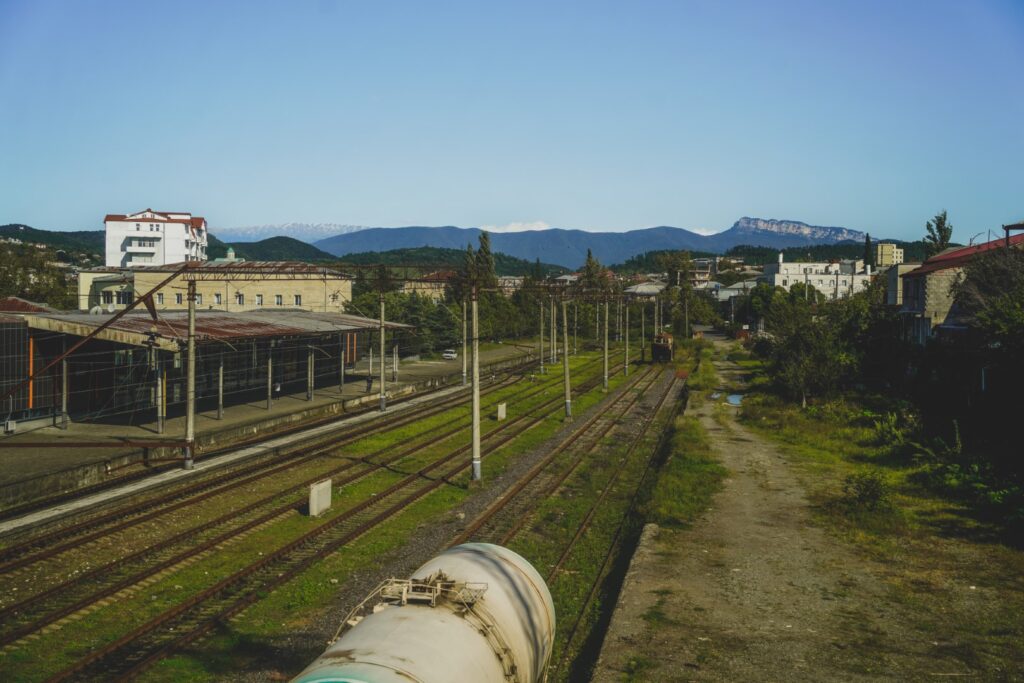
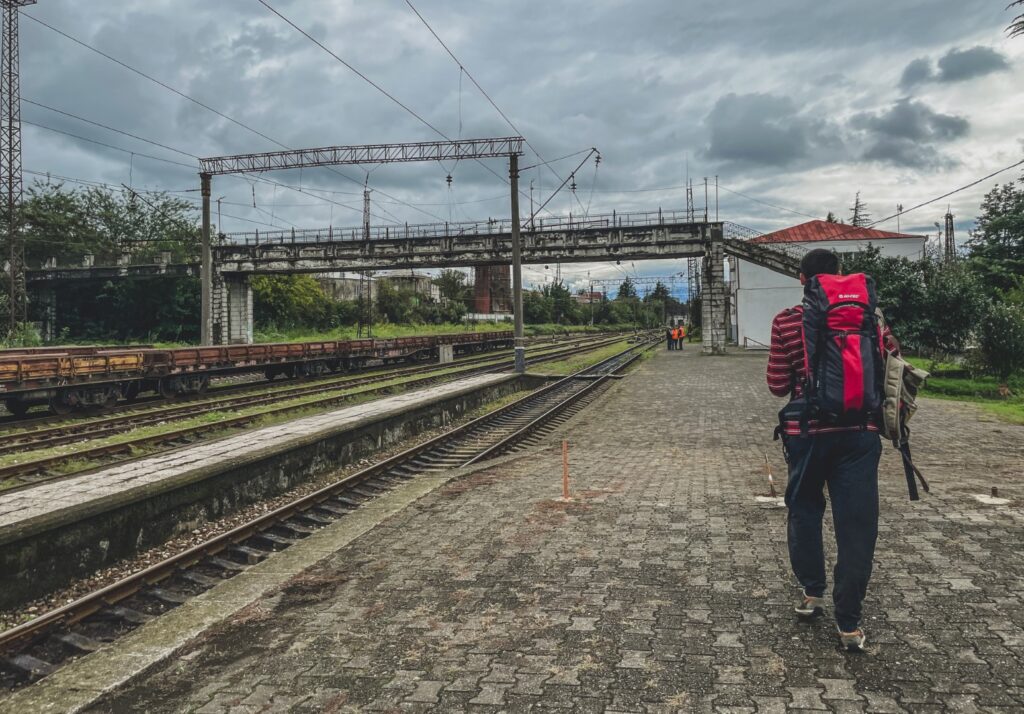
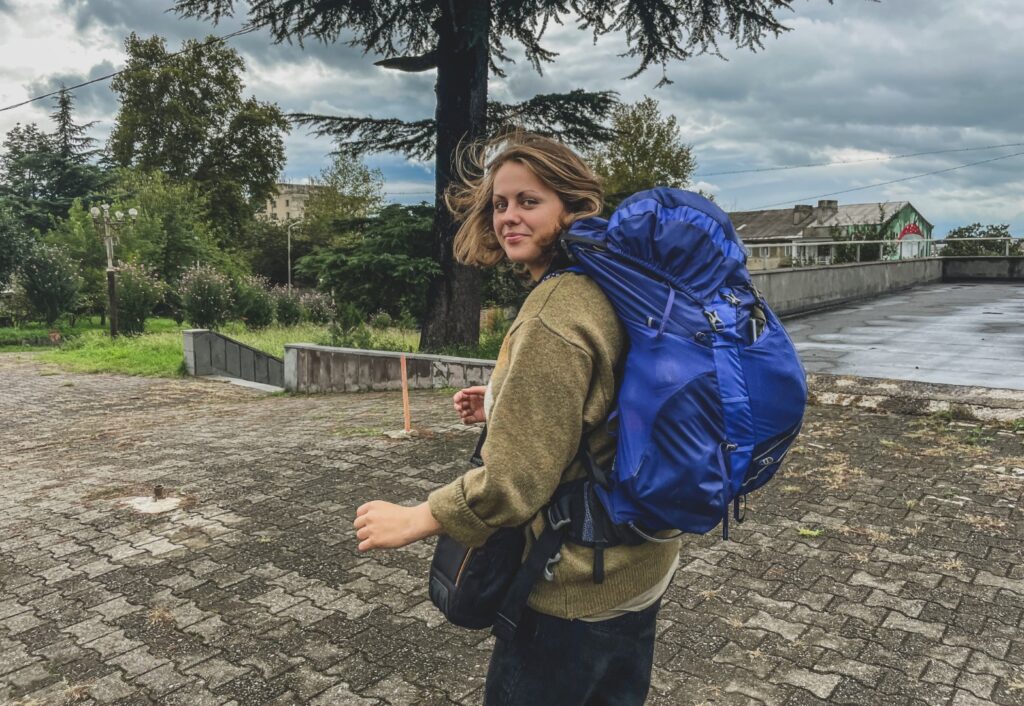
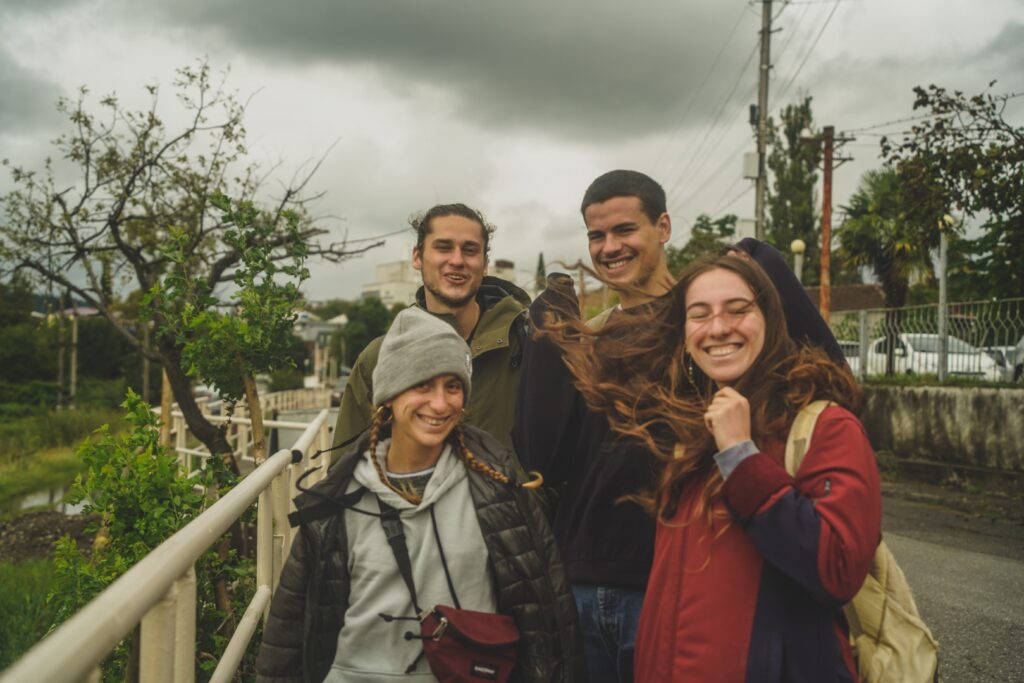

The main attraction near Kutaisi is Gelati Monastery. The Orthodox monastery, which was included on the UNESCO World Heritage list in 1994, was founded in 1106 by King David IV of Georgia as one of the first monasteries in the country. It’s considered one of the most important monasteries from the Georgian Golden Age, a period in the High Middle Ages during which the Kingdom of Georgia was at its peak of power and influence.
Beautifully perched atop a hill, the monastery is a sight to behold, but it’s actually the interior which makes it truly shine. With murals dating back to the 12th century and an excessive use of gold, this is possibly the most beautiful church interior I’ve ever seen (okay, Wieskirche excluded). Sure, Gelati is no grand cathedral, but I really love murals and these were particularly beautiful. I also generally prefer small churches versus the world-famous showpieces, because I find them more charming and gracefully humble.
We actually almost missed seeing the interior as the door was locked when we arrived. A little boy spotted us peering in through a crack in the door, and he held the key in his hand and opened the door for us. He was a hero in a very tiny package!

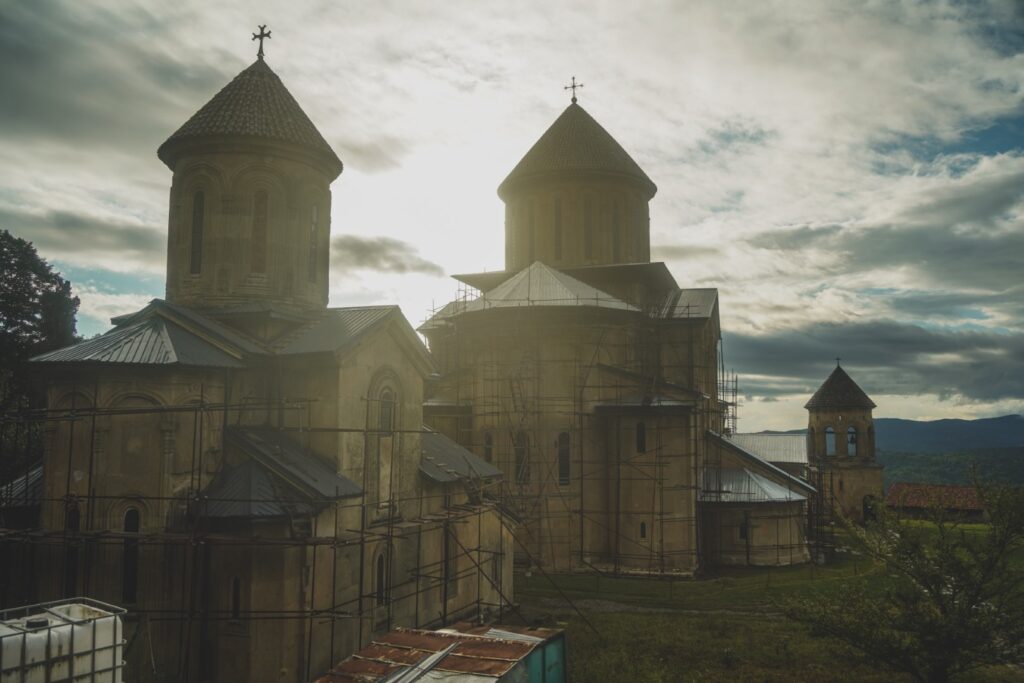


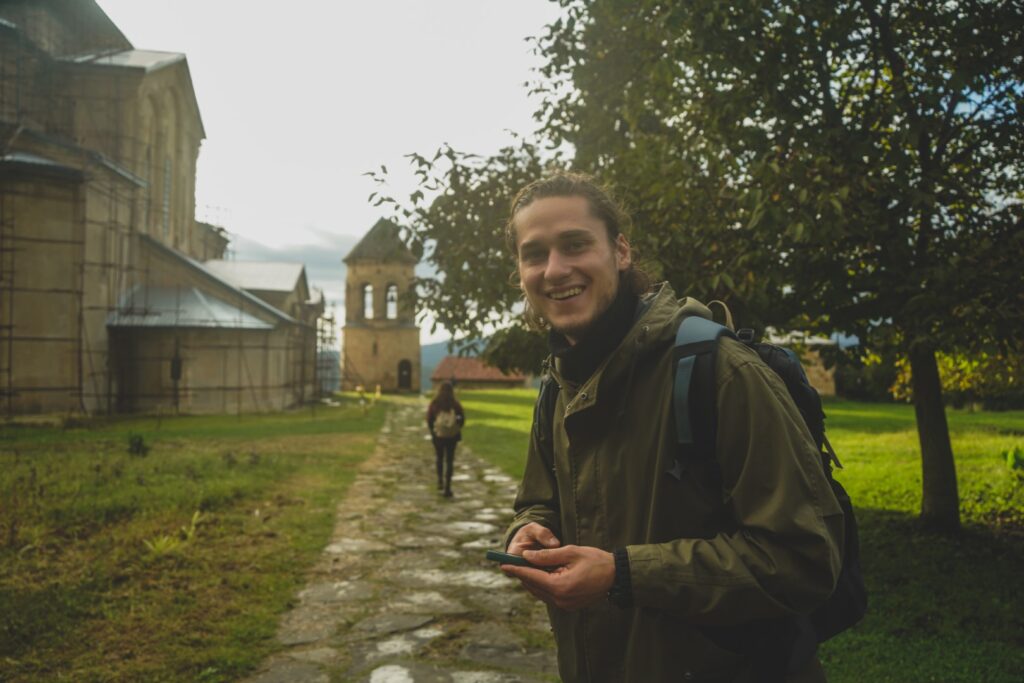

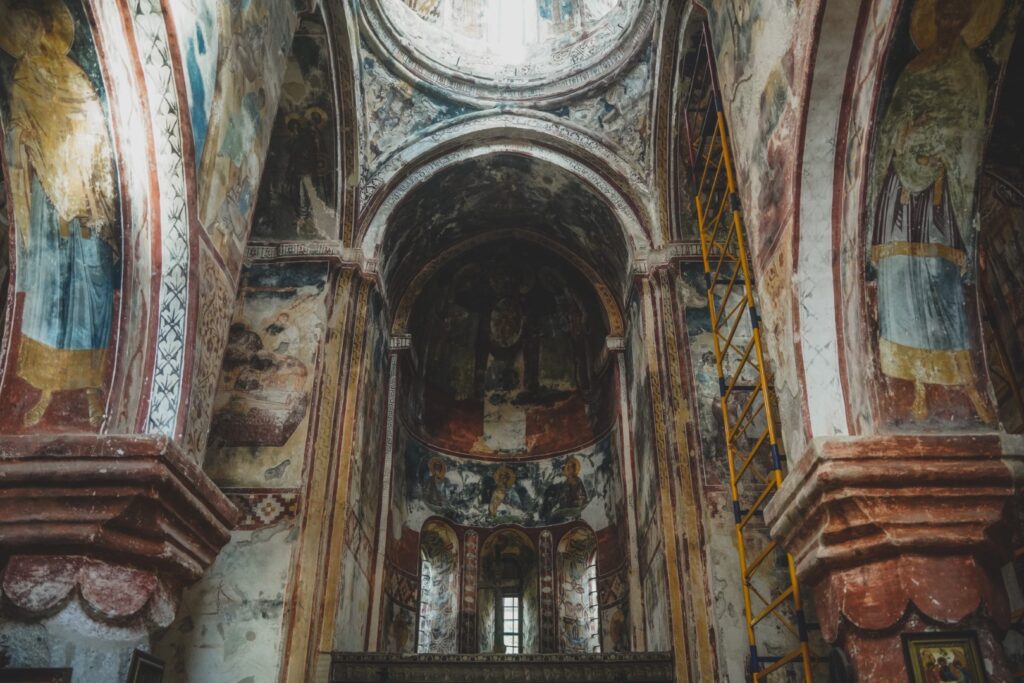
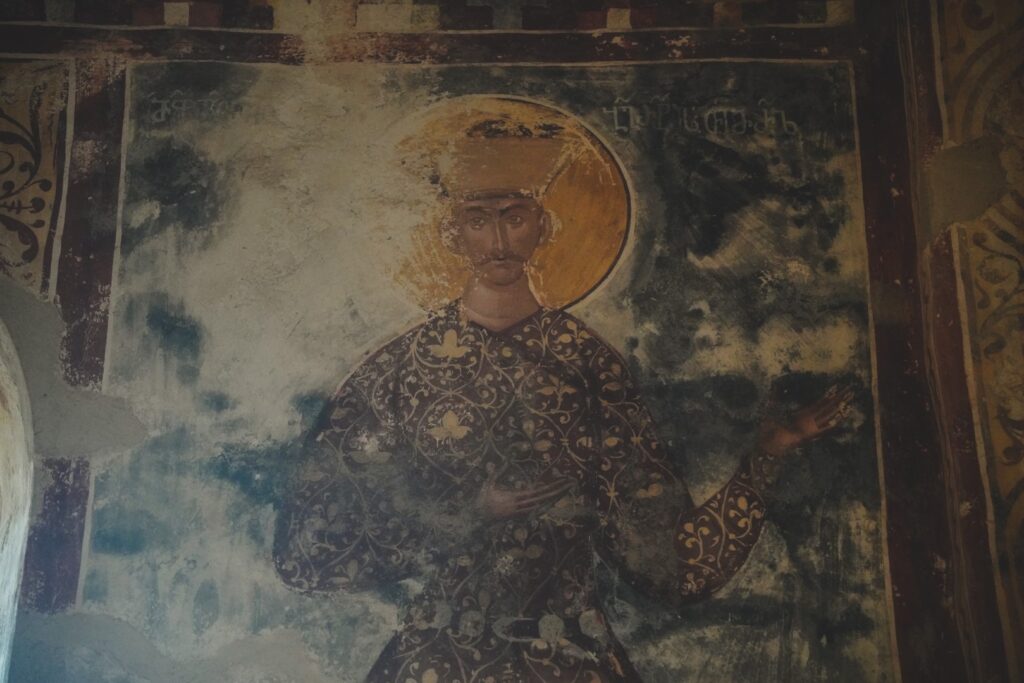
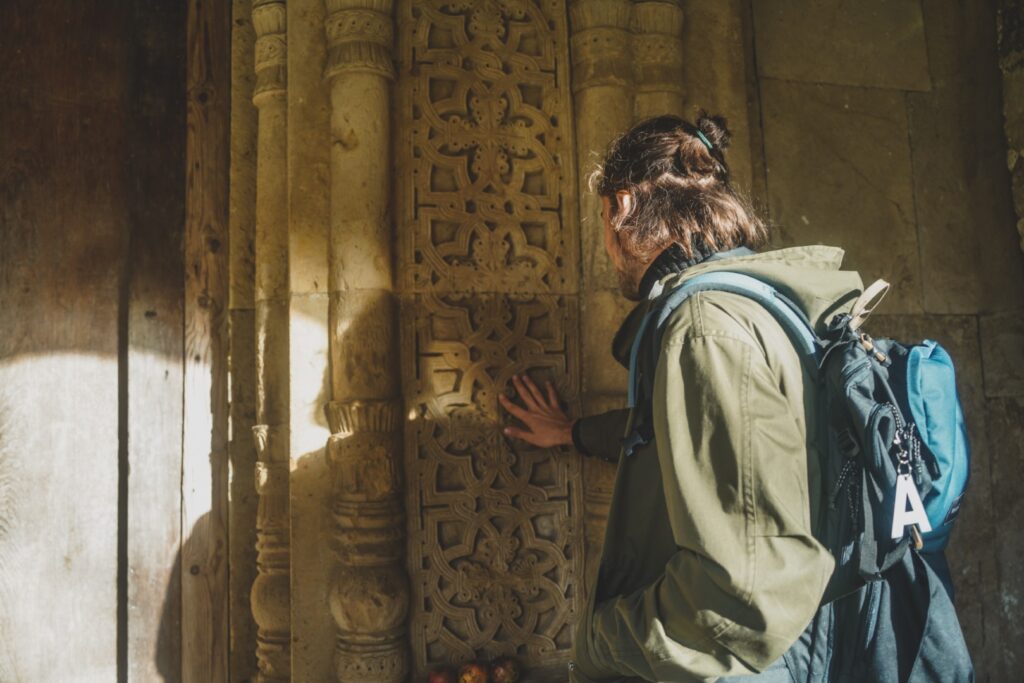
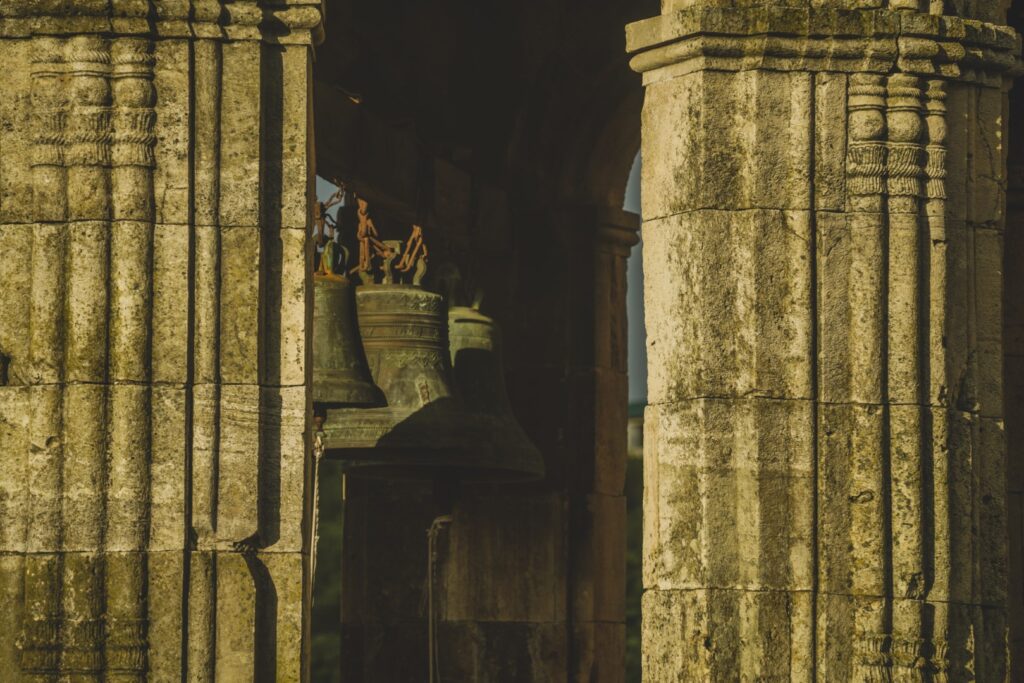

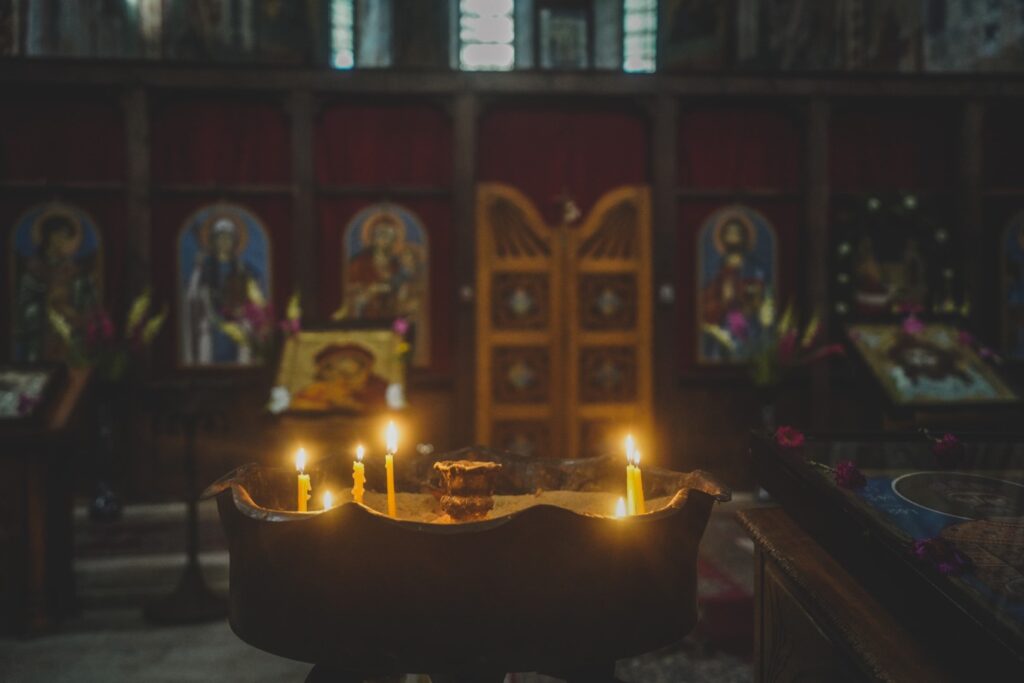
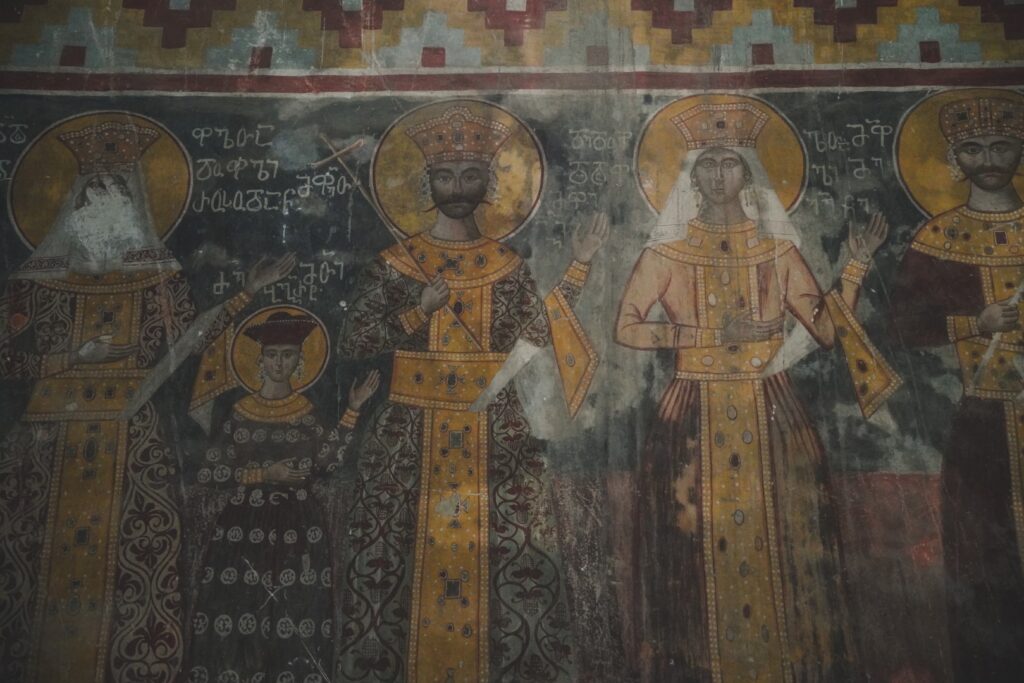

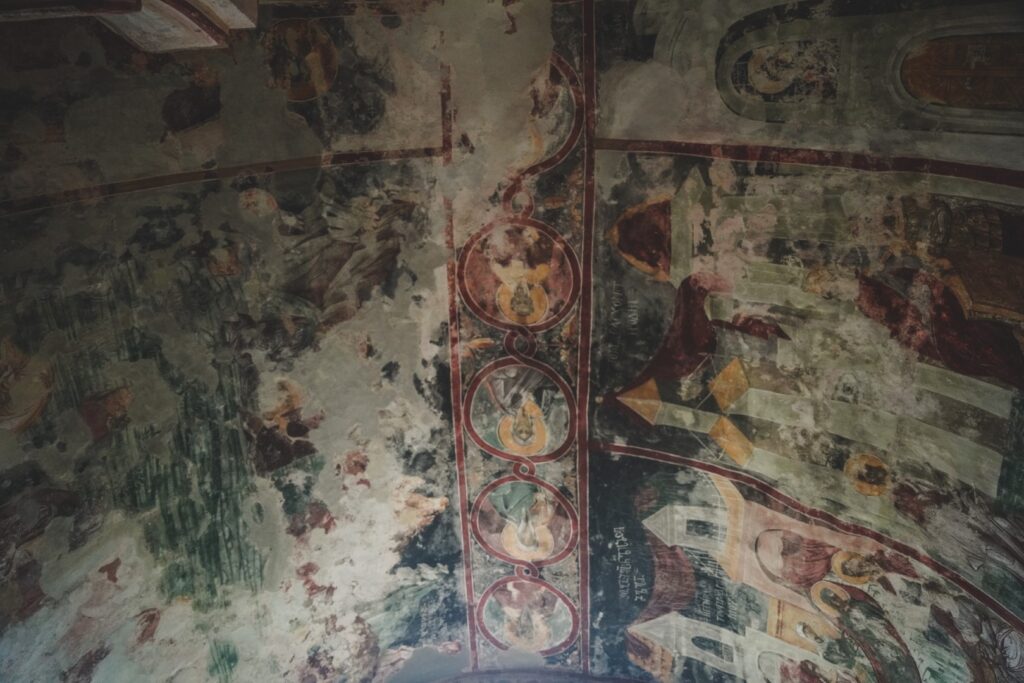


Getting to Gelati Monastery is no easy feat with marshrutkas only going there every two hours or so, so we decided to take a taxi as they’re incredibly cheap in Georgia. It turned out to be a great decision as our driver offered to take us to another nearby monastery that we hadn’t even heard of, and that monastery is located in an even more beautiful setting than Gelati. Needless to say, our drive earned himself a generous tip!
That monastery was Motsameta, located on a cliff overlooking the Tskaltsitela river valley. Motsameta was definitely more beautiful in terms of location, but it didn’t quite match Gelati in its interior. Still, I’m really glad we had the chance to explore this local secret.
The monastery was founded in the 11th century following a rather gruesome historical event. The name ‘Motsameta’ translates to ‘Place of the Martyrs’ and relates to two brothers of the noble family Argveti, who organized a rebellion against the Arabs in the 8th century. The rebellion failed and they were captured and later killed when they refused to convert to Islam. According to the legend, their bodies were thrown into the river below, and that’s how the river got its name, Tskaltsitela, which means ‘red water’. The brothers were recognized as Saints in the 11th century, and the King of Georgia founded the monastery on the spot where they were killed.

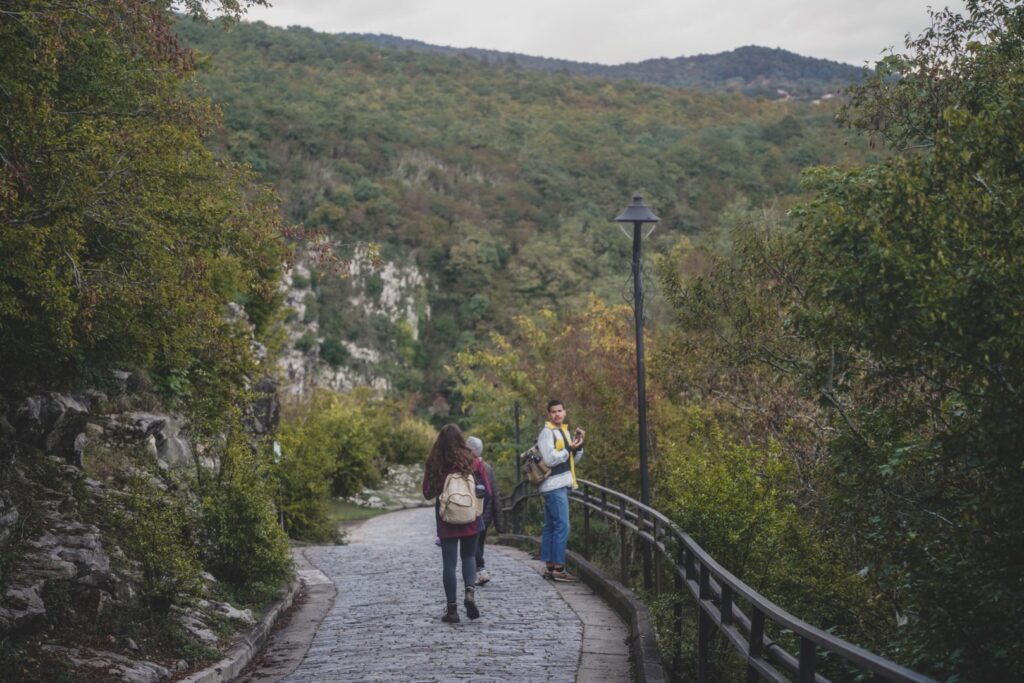


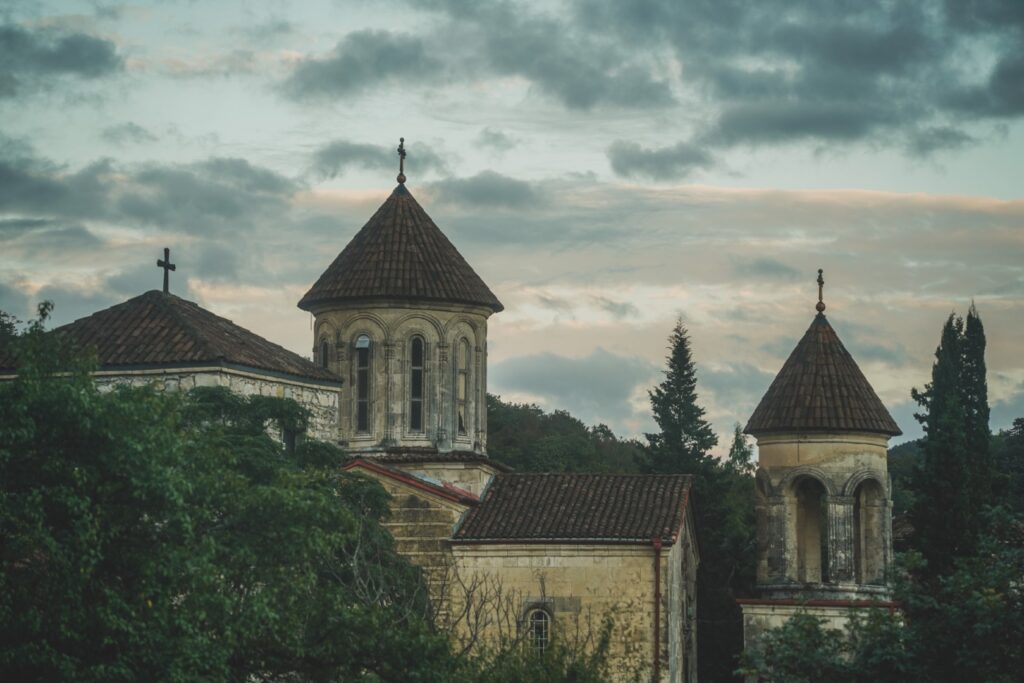
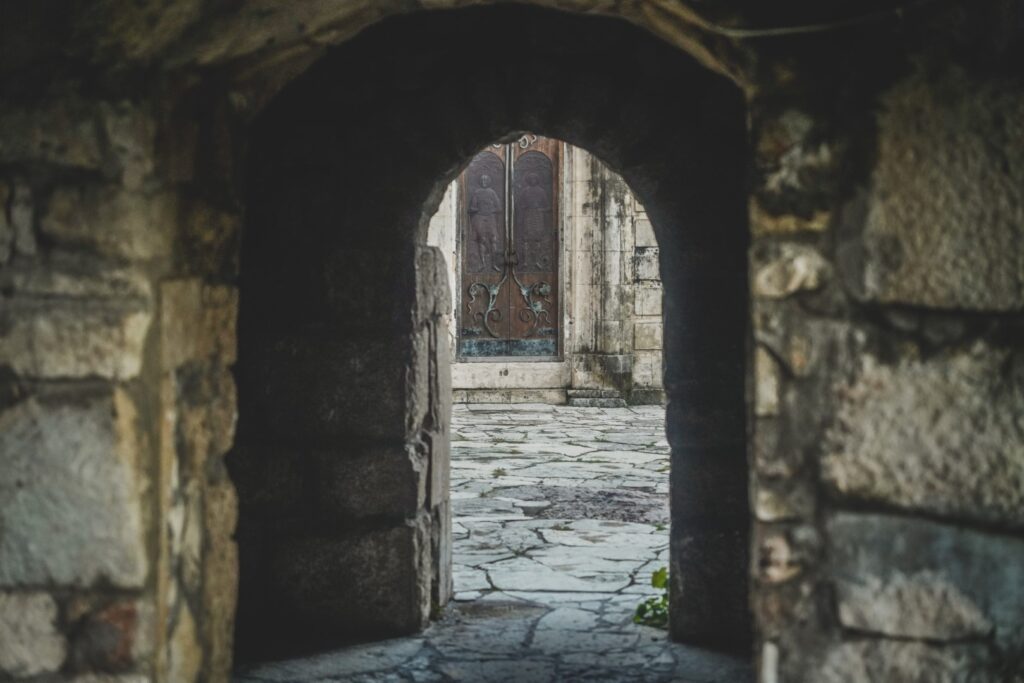

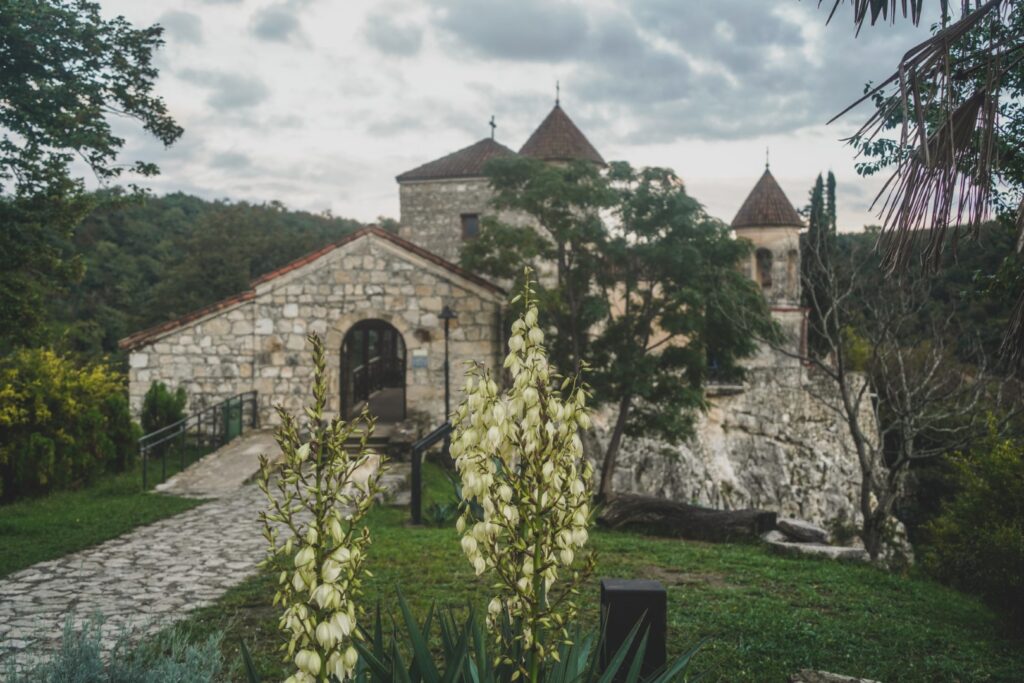

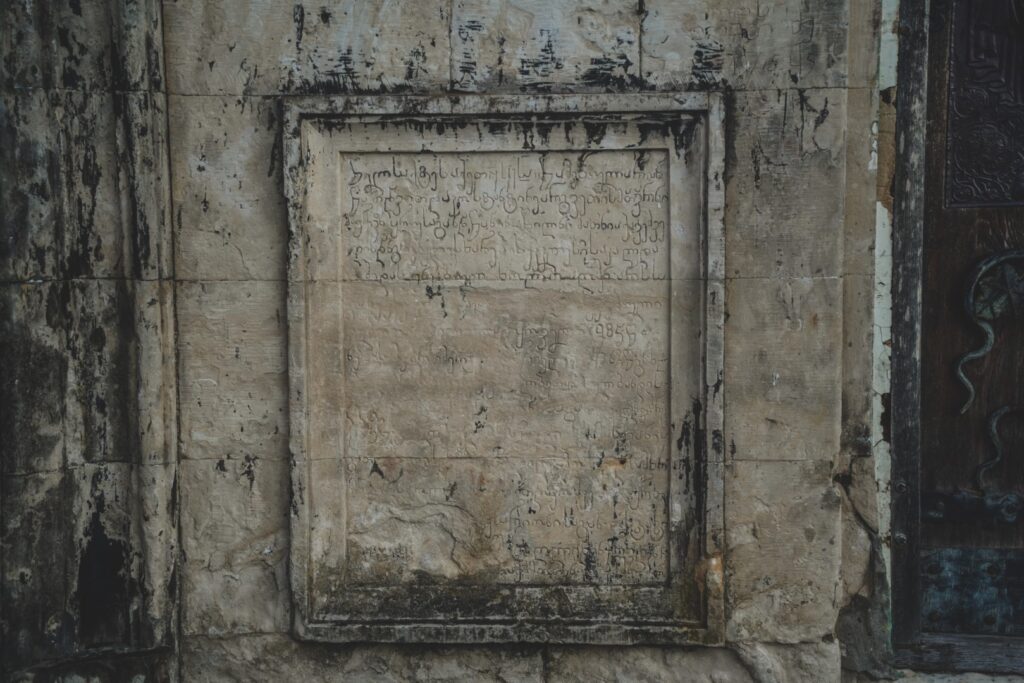

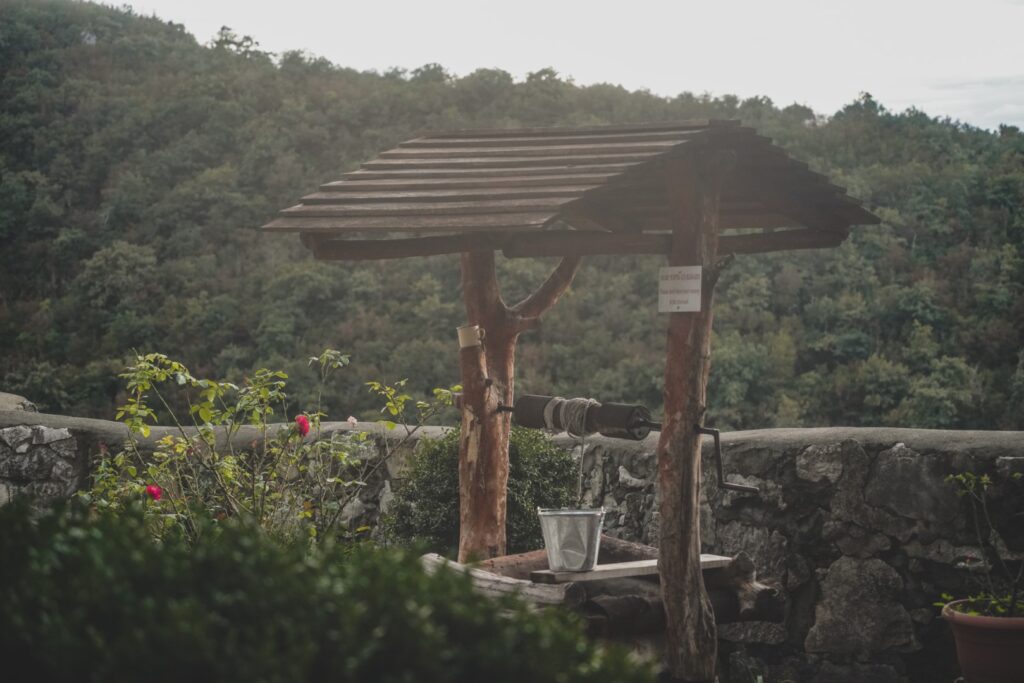
Returning back to the hostel in the evening, we soon organized a little evening adventure with Riccardo, the owner of the hostel. He took us to a natural sulphur pool, which is an open-air bath fed by a sulfur geyser. We went there in the dead of night, and I have no idea where we actually went, but it definitely seemed like we were in the middle of absolute nowhere. I’m not much of a water person, but I decided to join the trip mainly to see what all the fuss was about (Georgia is quite renowned for its natural sulphur pools!), and to enjoy the wonderful company. It was a really fun evening, and I’m glad I went despite my initial hesitation.
The following morning, I was woken up by one of the hostel kitties jumping into my bed for cuddles. My travel buddy and I were supposed to leave for Svaneti, but we’d had so much fun in Kutaisi that we decided to postpone it one more day. Instead, we spent the day out and about exploring Kutaisi and the surrounding area with the gang.
A and I began the morning with a little walk around the neighbourhoods surrounding the hostel. We met the cutest little kittie, and ate a bunch of fresh fruits, directly from the trees. We enjoyed this walkabout a lot, so much that we accidentally missed the shared taxi that had been ordered for our gang. When we returned to the hostel, no one was there, so we quickly ordered another taxi for ourselves and followed them to Tskaltubo where they first went.
Tskaltubo used to be a well-visited spa town during Soviet times, but today, most of the sanatoriums are abandoned. We had a swell time exploring a huge sanatorium and climbing its roof, but you’ll have to wait for my next Georgia post to read more. Tskaltubo is a truly special place that deserves its own write-up!

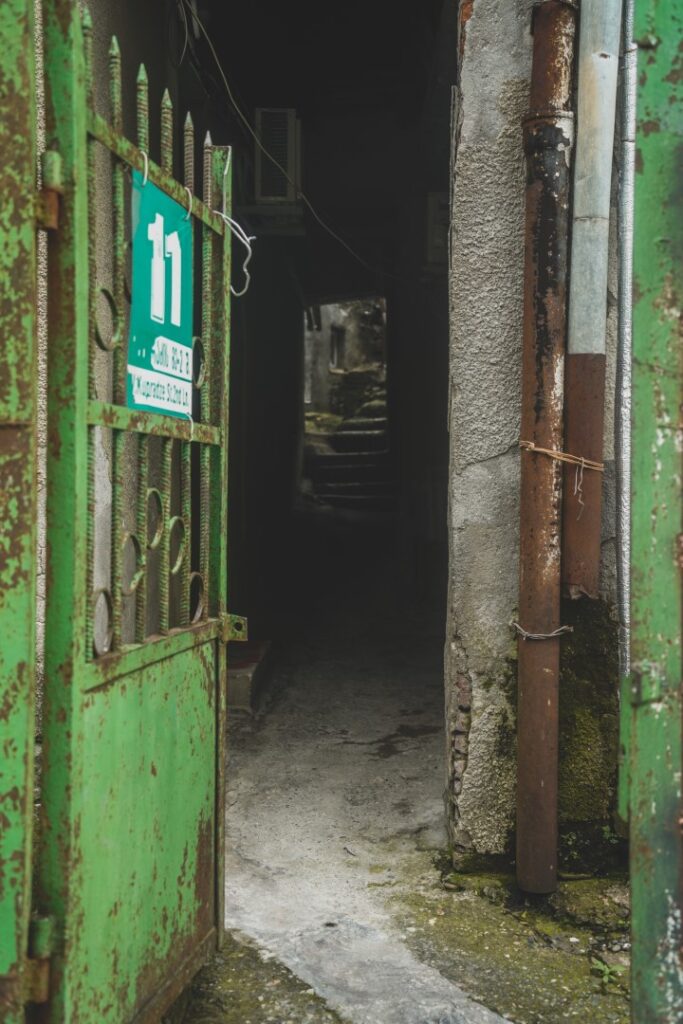


Leaving Tskaltubo behind after a few hours of exploring, we headed to Prometheus Cave, a majestic karst cave discovered in the early 1980s by Georgian speleologists. It’s part of a large cave system, united by an underground river, only half of which has currently been investigated. The total length of Prometheus Cave is 11 kilometres, and it reaches a depth of 40 meters.
Of its 22 halls, just six are open to the public yet those alone offer a kilometre-long route with many beautiful sightings of stalactites and stalagmites illuminated by tacky colourful lights. In hindsight, I would’ve spent more time in Tskaltubo and missed out on the cave as I’ve seen many similar caves around the world, but still it was fun to see this side of Georgia as well. I really love how diverse this country is despite its small size!
We returned back to the hostel after this little cave adventure, for a last evening of kittie cuddles and fun with the gang.
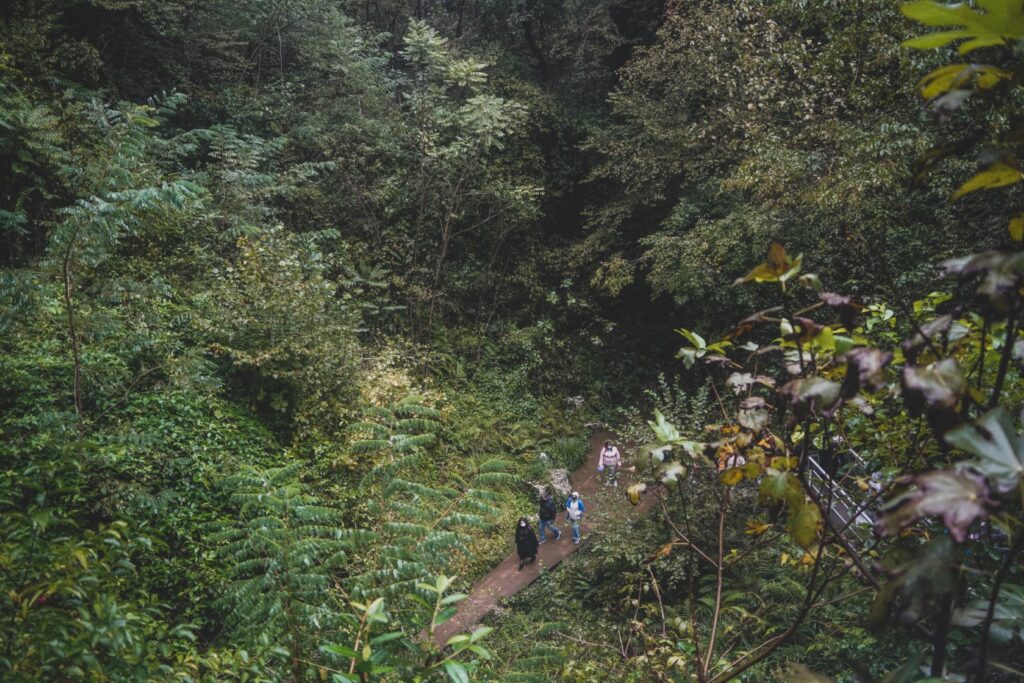


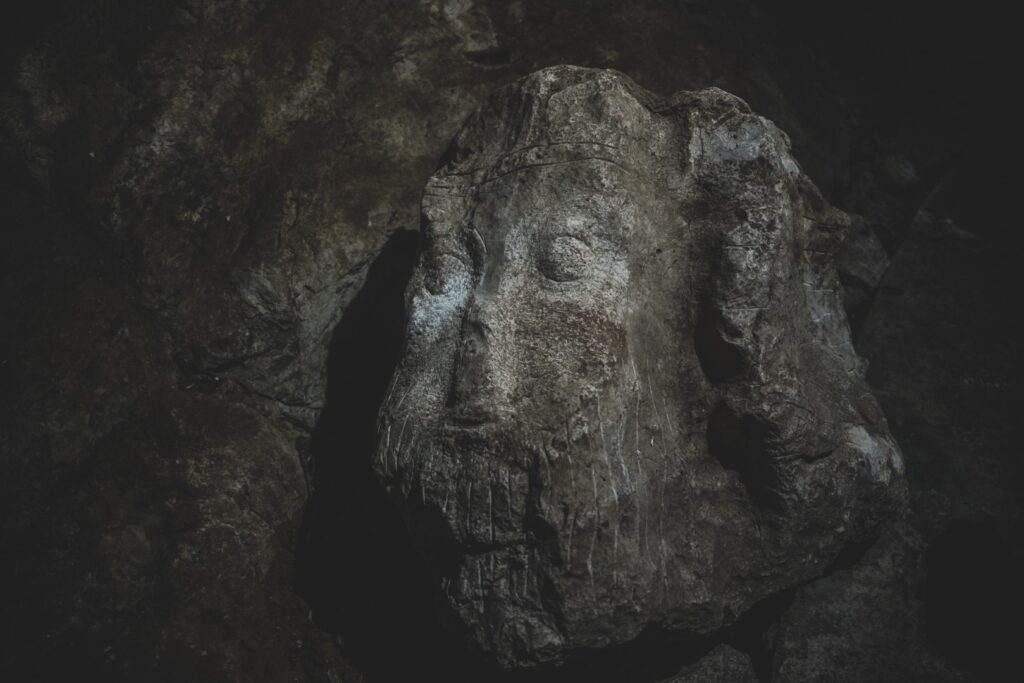
After two wonderful unexpected days in Kutaisi, it was time to say goodbye to the gang and move on to our next destinations. My travel buddy and I finally went to Svaneti, and our friends continued on their journeys.
But some days later, – after an epic time hiking in the Svan Mountains, – we returned to Kutaisi, this time with our new hiking buddy who we’d met in Svaneti. We made it to the city late at night en route from Svaneti to Tbilisi, and stayed the night at Dingo Backpackers Hostel for a fun time with new and old friends. The next morning, the three of us walked around Kutaisi and took the cable car to the upper part of the city which offered beautiful views over the low skyline. In the early afternoon, we waved Lukas off to the airport and left for Tbilisi on the train, saying goodbye to Kutaisi once again.

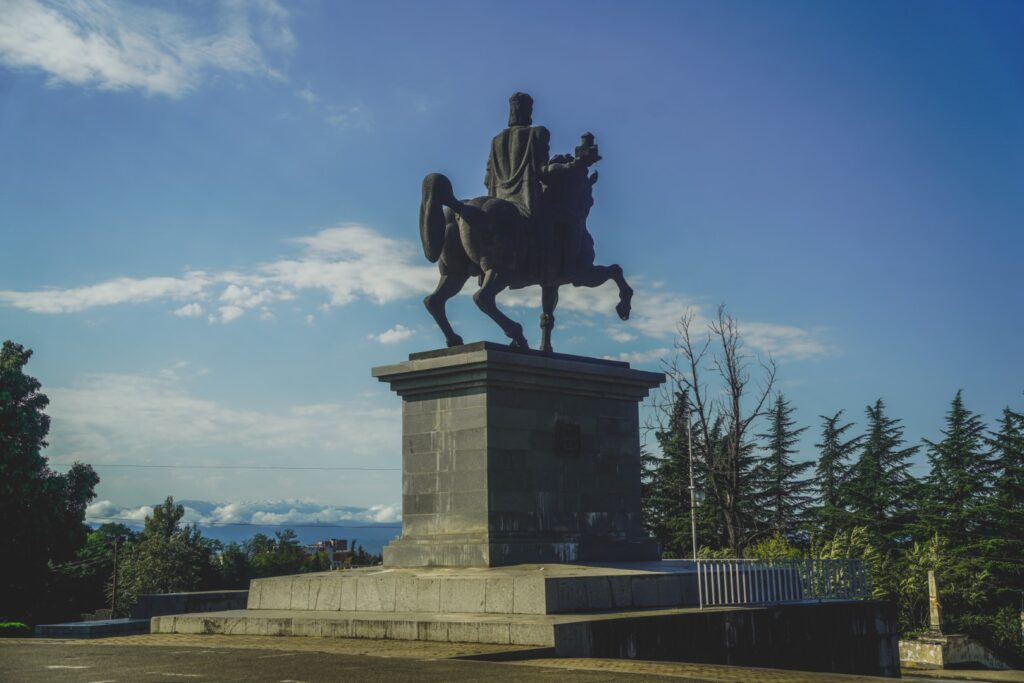

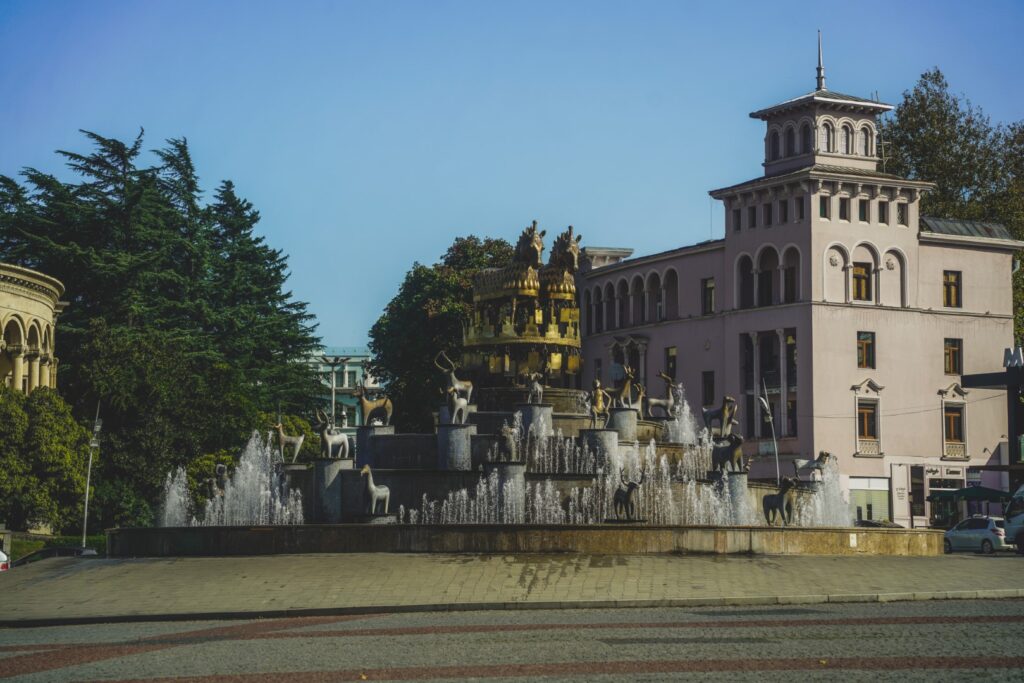
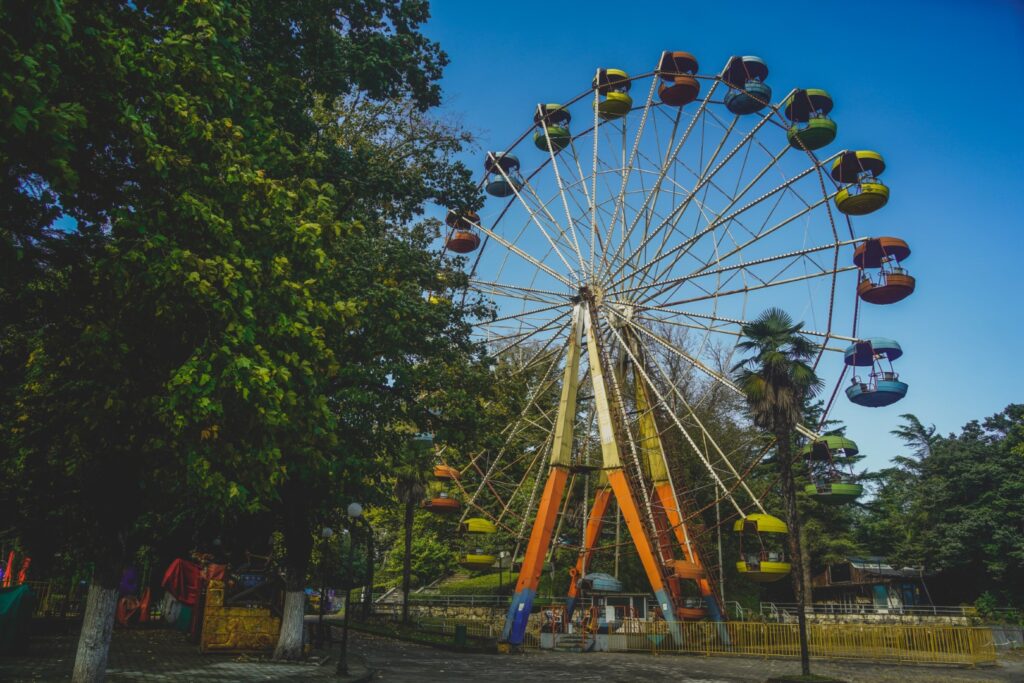
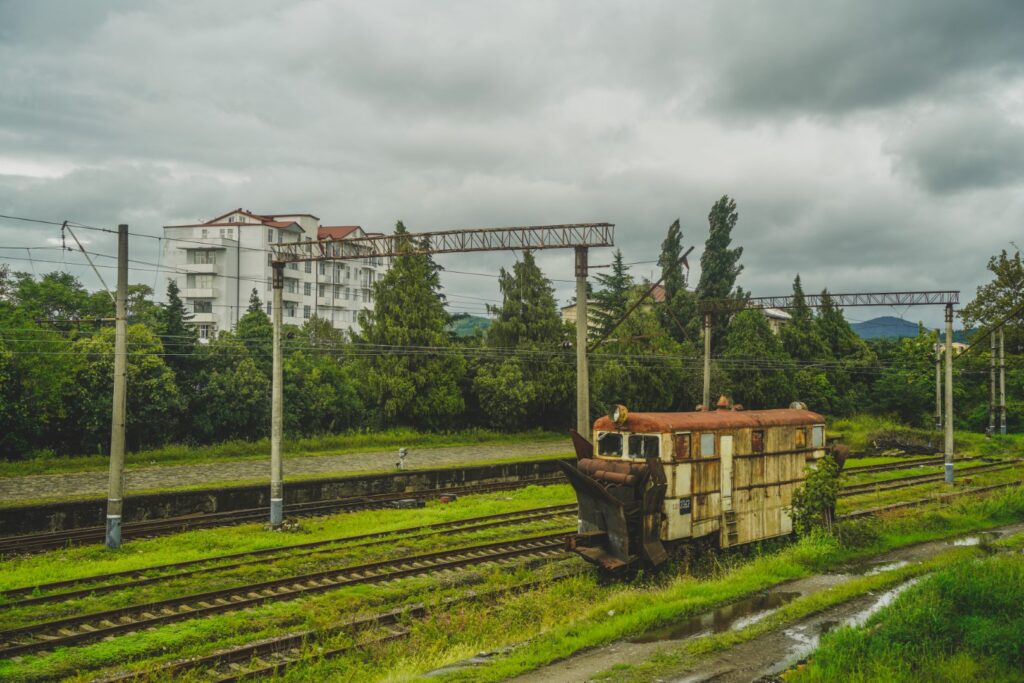
Kutaisi was an unexpected add-on to my experiences in wonderful Georgia, a country I fell more and more in love with for every day that passed. I’m so thankful we made this stop in Kutaisi to experience Georgia off the beaten track, and see something else than “just” Tbilisi and the mountains. Kutaisi was a wonderful surprise, a much better destination than first anticipated!
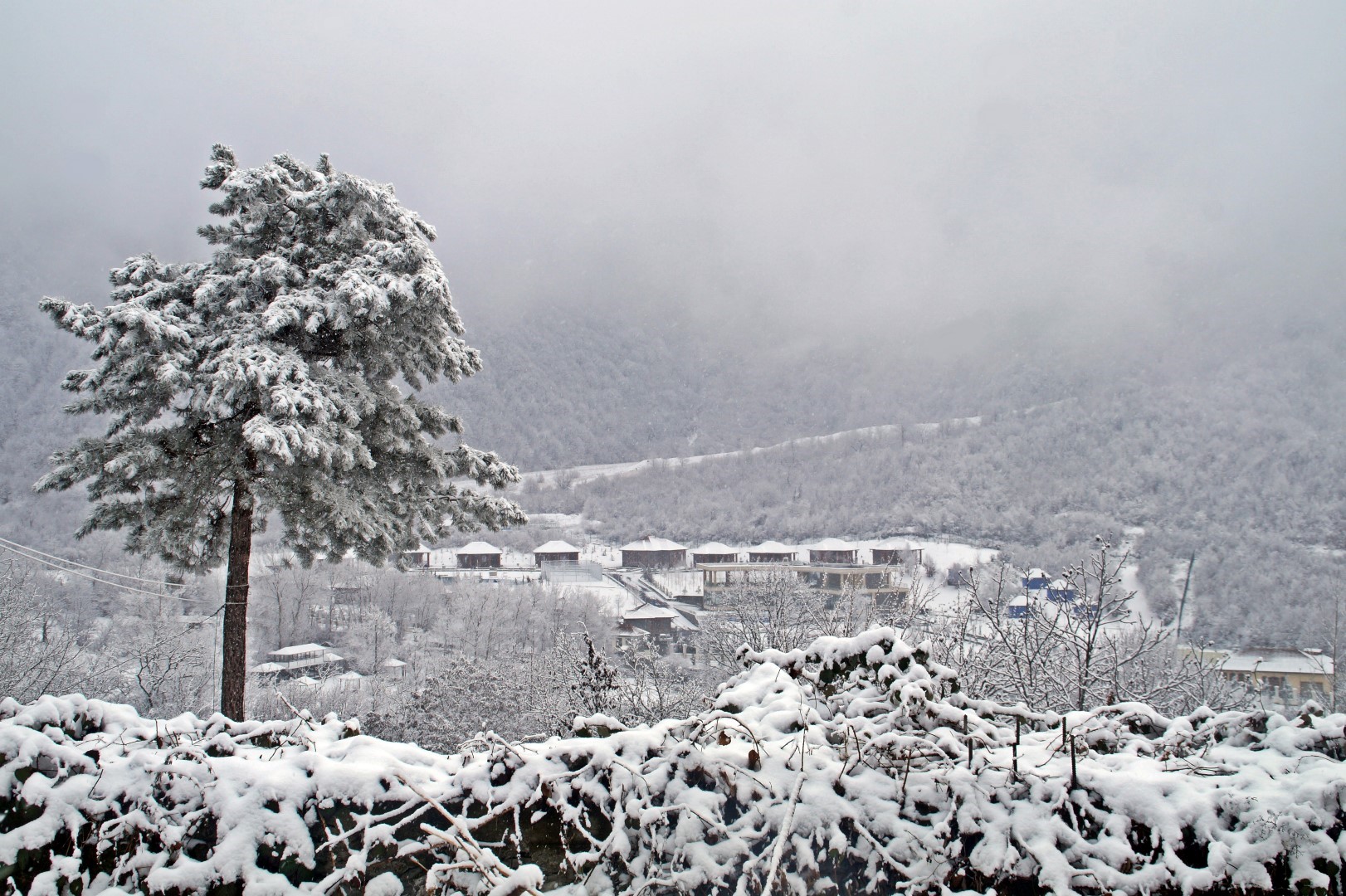
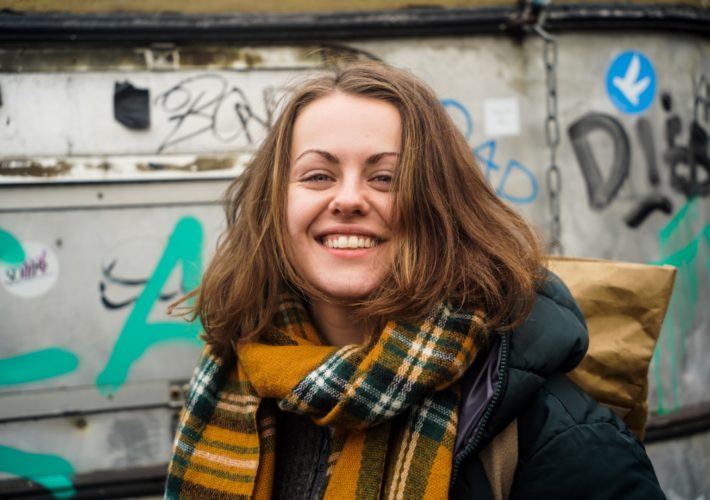
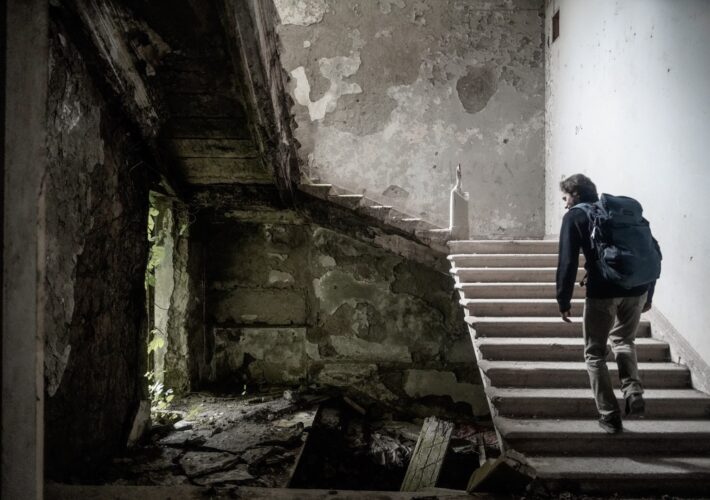
Leave a Comment